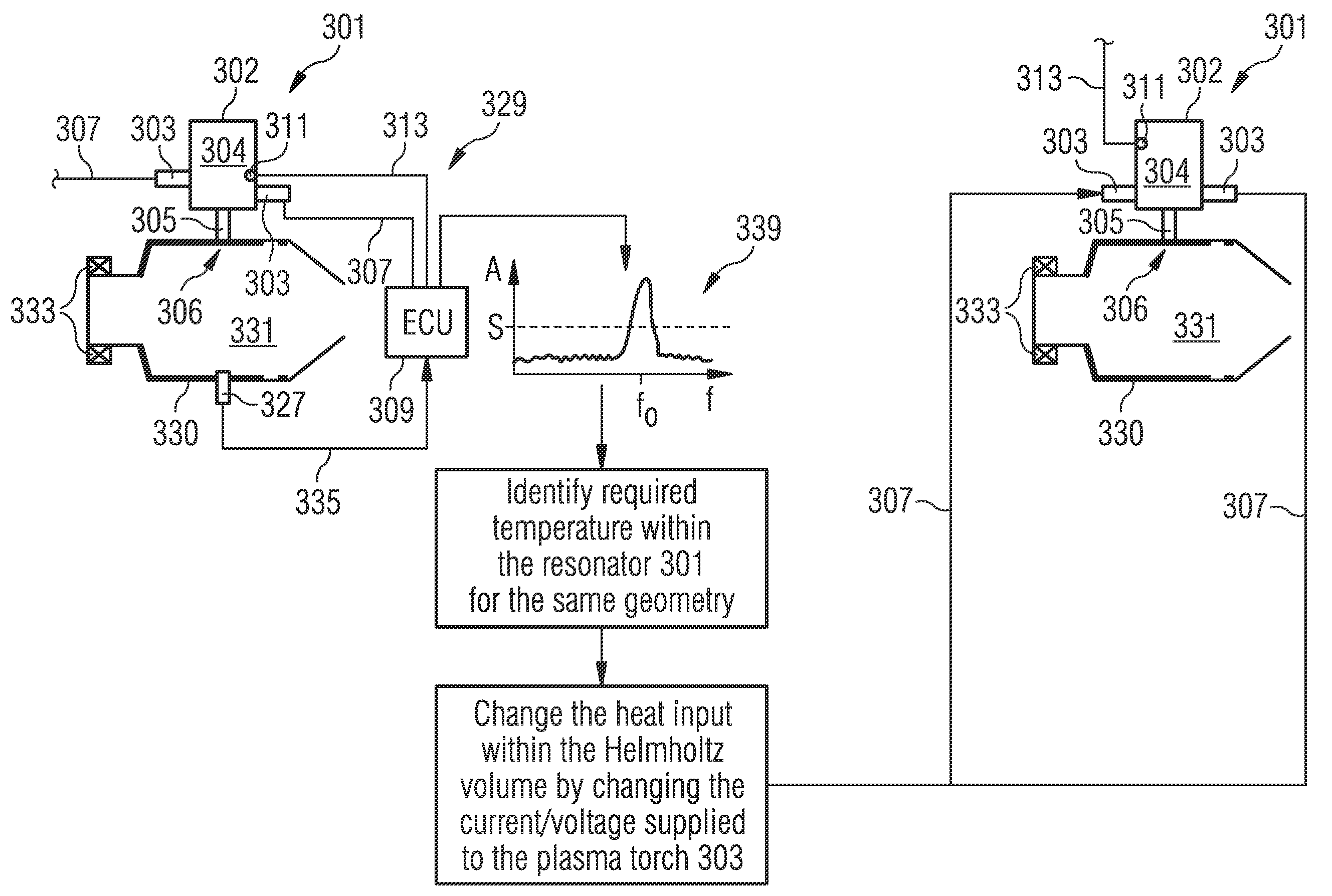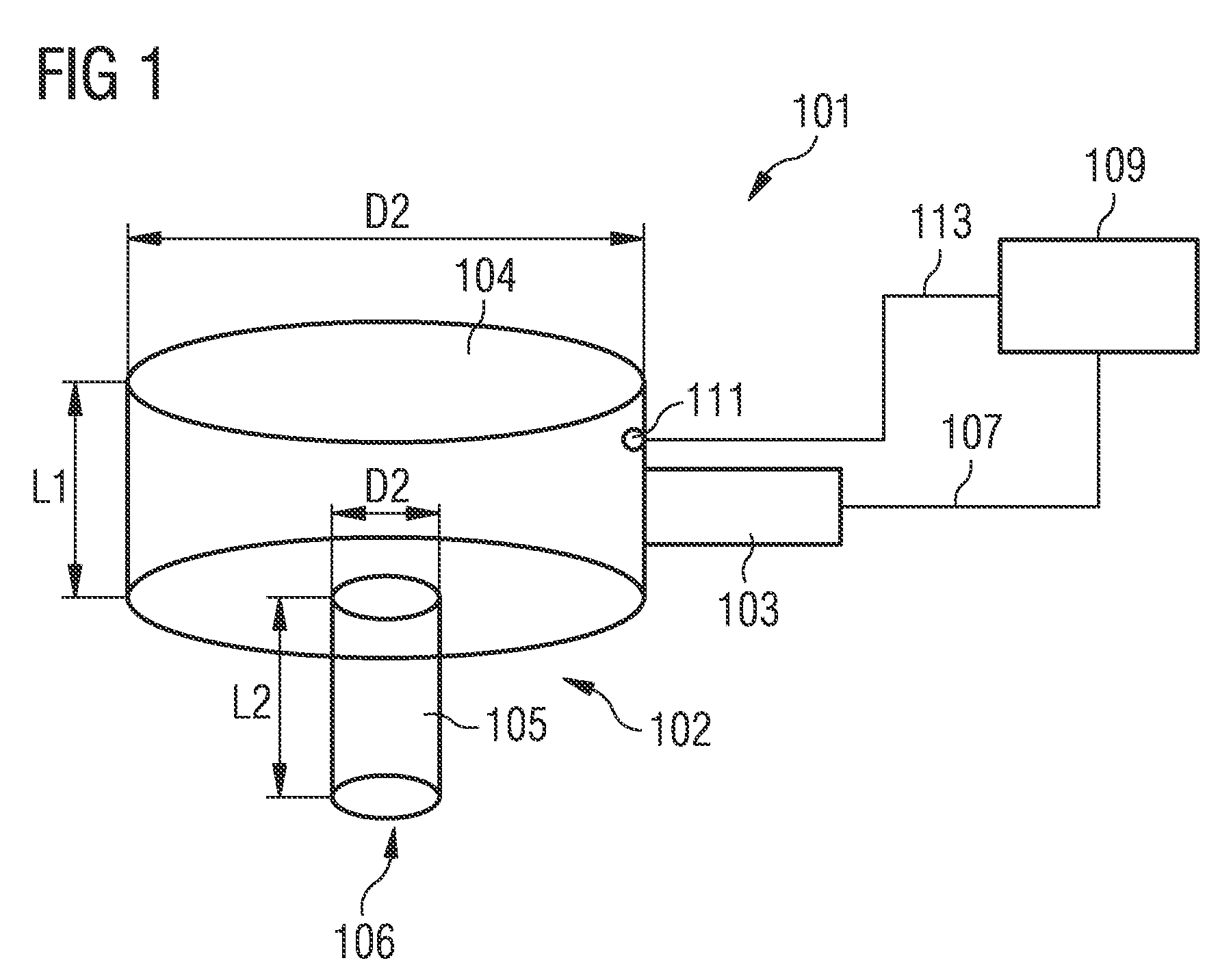Resonator device for damping the pressure oscillation within a combustion chamber and a method for operating a combustion arrangement
a technology of pressure oscillation and resonance device, which is applied in the direction of mechanical equipment, machines/engines, lighting and heating apparatus, etc., can solve the problems of adverse effects on the operation of the combustion chamber, particularly the efficiency of the gas turbine, and the inability of the combustion chamber to work satisfactorily under changing running conditions, etc., to achieve the effect of rapid load change of the combustion chamber
- Summary
- Abstract
- Description
- Claims
- Application Information
AI Technical Summary
Benefits of technology
Problems solved by technology
Method used
Image
Examples
Embodiment Construction
[0039]The illustration in the drawing is schematically. It is noted that in different figures, similar or identical elements are provided with the same reference signs or with reference signs, which are different from the corresponding reference signs only within the first digit.
[0040]FIG. 1 schematically shows a resonator device 101 for damping a pressure oscillation within a combustion chamber. The resonator device 101 comprises a container 102 which is filled with a gas, such as air, and comprises a heating element 103 which is adapted as a reverse vortex plasma generator. The container 102 of the resonator device comprises a body portion 104 and a neck portion 105. The body portion 104 comprises a cylindrical container which is in communication with the neck portion 105 which also has a cylindrical shape but having a much smaller diameter D2 compared to the diameter D1 of the body portion 4 of the resonator device 101. The body portion has a length L1 and the neck portion has a ...
PUM
 Login to View More
Login to View More Abstract
Description
Claims
Application Information
 Login to View More
Login to View More - R&D
- Intellectual Property
- Life Sciences
- Materials
- Tech Scout
- Unparalleled Data Quality
- Higher Quality Content
- 60% Fewer Hallucinations
Browse by: Latest US Patents, China's latest patents, Technical Efficacy Thesaurus, Application Domain, Technology Topic, Popular Technical Reports.
© 2025 PatSnap. All rights reserved.Legal|Privacy policy|Modern Slavery Act Transparency Statement|Sitemap|About US| Contact US: help@patsnap.com



